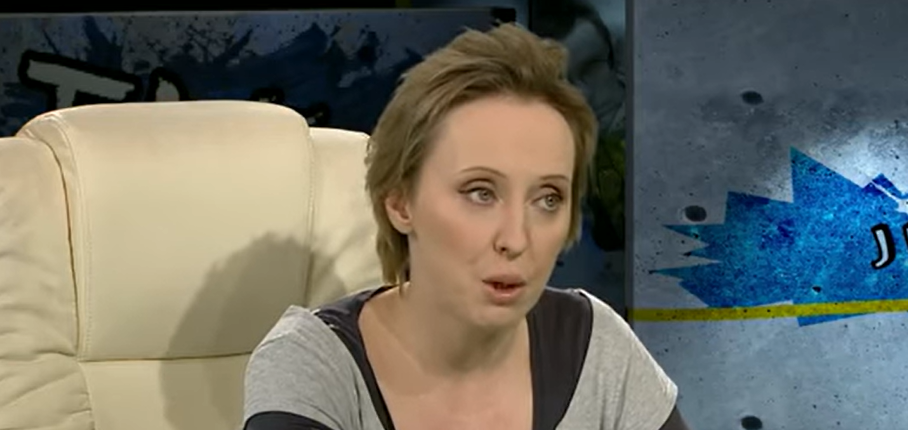In 2025, Polish journalism lost a compass during a muggy July week. After a brief illness, Marta Bratkowska, who was lovingly known as “Szeryf,” died at the age of 58. Many were taken aback by her departure, not only because she continued to be very active in literary circles but also because her presence had seemed so permanent. The loss of a woman whose voice consistently shaped stories and sharpened truth caused editors, reporters, and writers of all generations to pause, clearly shaken.
Bratkowska’s name was widely recognized in Poland’s media for more than 20 years. She established a career based on honesty and unafraid criticism during her early positions at RMF FM and “Dziennik” and her well-known leadership at “Gazeta Wyborcza.” Her editorial pen was revolutionary, not just red. Her colleagues frequently characterized her as incredibly honest, remarkably effective in execution, and exceptionally clear in purpose. Her influence went well beyond what was written; she guided, shielded, and uplifted people she supported.
Marta Bratkowska – Biography Table
| Attribute | Details |
|---|---|
| Full Name | Marta Bratkowska |
| Date of Birth | August 13, 1966 |
| Date of Death | July 16, 2025 |
| Age at Death | 58 years old |
| Occupation | Journalist, Editor, Reporter, Writer |
| Notable Works | Galeria (2012), Nieprawdopodobne, a jednak… (2012), Ludzie (2024) |
| Affiliated Media | Gazeta Wyborcza, RMF FM, Dziennik |
| Nickname | “Szeryf” (The Sheriff) |
| Education | Polonistyka, Uniwersytet Warszawski |
| Final Position | Senior Editorial Role at Gazeta Wyborcza |
| Known For | Fearless editing, promoting literary debuts, uncompromising journalism |
| Official Reference | IMDb Profile |

Through meticulous editing and astute mentoring, Bratkowska became a literary discovery catalyst. Her reviews frequently predicted future literary sensations, and she enthusiastically promoted debut crime novels. Her enthusiasm was especially helpful to up-and-coming writers who found it difficult to overcome conventional obstacles. Marta made readers care about the underdog while praising risk-takers when others were afraid to do so.
She wasn’t given the nickname “Szeryf” by accident. It developed from her rigorous yet equitable editing methods, which greatly raised the caliber of innumerable publications. By requiring excellence even when it was painful, she gained respect the hard way. Her longtime coworker Marta Górna said she was “even better as a friend than as an editor,” which says a lot about her personality. Bratkowska was very affable in person, despite her intimidating appearance.
Her death had a profound emotional impact that extended well beyond her close friends and family. In a heartbreaking post, her son wrote: “My dad left four years ago. Mom is now with him. The best parents a person could ask for… My heart shattered into a thousand fragments. Readers were reminded by this incredibly personal admission that Marta was a cherished mother in addition to being a legend in Polish media.
No official condolences were expressed in public statements, per her family’s request. Unexpectedly, Marta’s own strategy for gaining public recognition—earn it, never ask for it—was reflected in that silence. She preferred the quiet pride of a job well done over performative praise. Her farewell felt refreshingly human in a time when grief frequently becomes hashtagged.
Bratkowska’s inclination to support stories that struck a deep rather than a broad chord was what made her editorial career so inventive. Impact was more important to her than impressions. Her incisive criticism served as a compass rather than a scalpel for writers. She improved dreams rather than shattering them. Even though her edits were occasionally painful, they frequently helped a piece find its ideal rhythm.
She contributed to redefining storytelling during a time of significant change in Polish media by working with enthusiastic writers and designers. Marta advocated for immersive experiences that resonated with readers’ emotions, while other editors stuck to antiquated models. Her emotionally nuanced content and careful structure significantly increased engagement without sacrificing quality.
She had an impact that went beyond print. Her behind-the-scenes participation in the 2024 television premiere of “Ludzie” showcased her extraordinarily adaptable command of both story and production. A broader trend among editors looking to future-proof their contributions was reflected in Bratkowska’s smooth transition into multimedia. She welcomed AI and digital changes with tact and curiosity rather than fearing them.
Her role has grown more and more crucial over the last ten years. She was influencing public opinion in addition to editing content. Intention, not ink, was her signature. Her clarity stood out in a media landscape that is frequently muddled by speed and noise. She demonstrated that genuineness can withstand algorithms and that intelligent content is still important.
Despite the fact that Marta Bratkowska never sought fame, her passing was lamented like one. Many of the readers, authors, and broadcasters who paid their respects had never met her. Why? since they had sensed her. Her words encouraged them to write more candidly, pushed them to think more deeply, or got them through challenging times. Such a legacy must be earned via decades of speaking the truth; it cannot be purchased or created.
The qualities that characterized her public and private lives were quiet, private, and dignified, all of which characterized her final days. Her legacy is ingrained in every sentence she helped create, every young voice she supported, and every standard she refused to lower, even though she left no memoir. She elevated journalism along with her by holding it to a higher standard.
